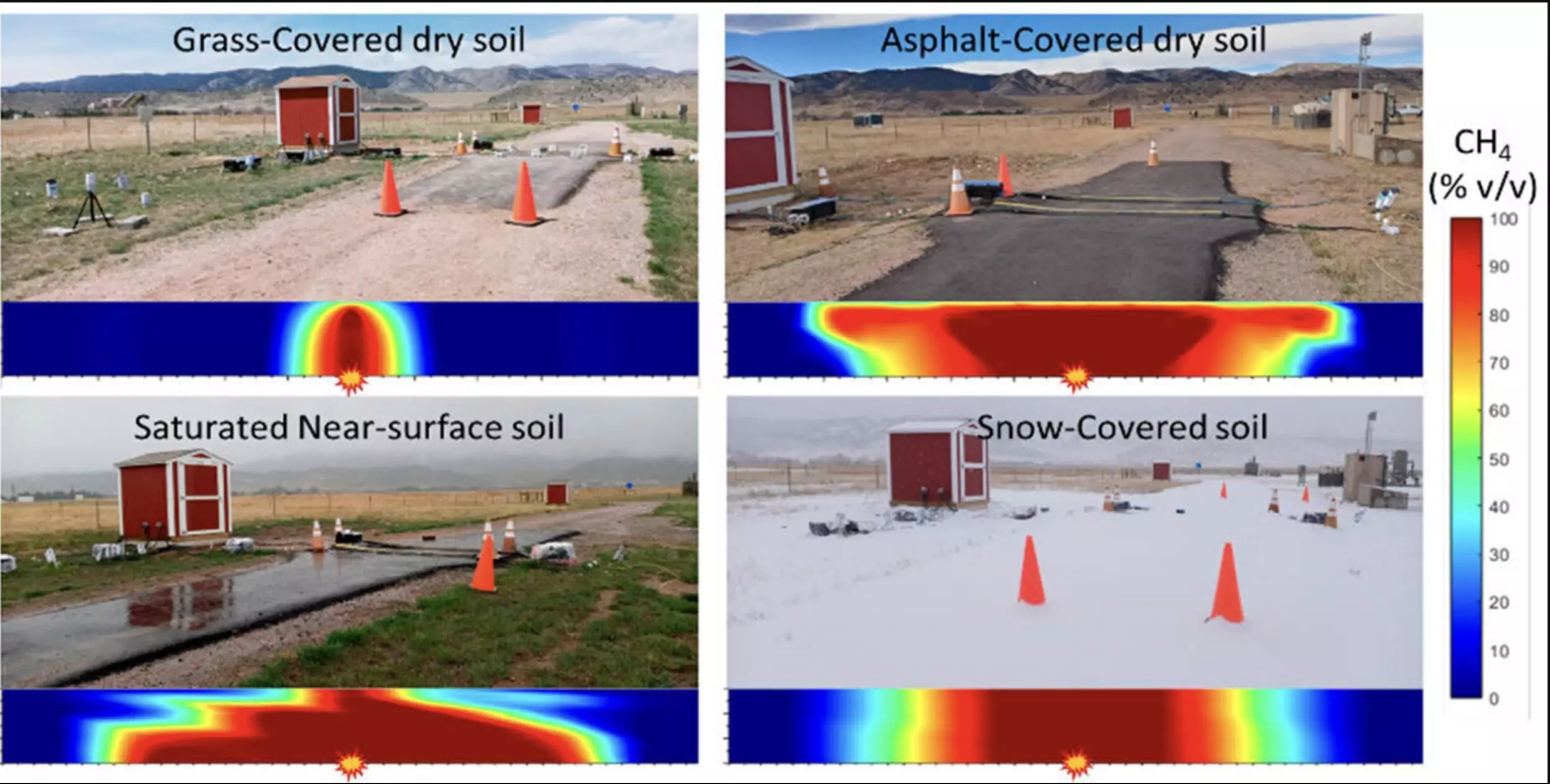Recent research emanating from Southern Methodist University (SMU) has unveiled some shocking realities about natural gas leaks, particularly regarding how environmental conditions can drastically influence gas behavior below the surface. Conducted by an adept team of scientists, their findings indicate that when leakages occur under snow, rain, or asphalt, the leaked natural gas can travel three to four times farther than it would through dry soil. This revelation is not just an academic exercise; it has real-world implications for public safety and environmental conservation.
The study highlights a critical gap in our understanding of how surface conditions interact with the subsurface dynamics of gas migration. The researchers were able to simulate various leak scenarios and established the correlation between wet surface conditions and the speed and distance gases can move through soil. This foundational knowledge communicates a dire need for immediate recalibration of how gas companies and emergency responders assess risk.
The Hidden Dangers of Methane
Methane, the principal component of natural gas, is not just an energy source; it poses significant risks that are twofold. Not only can it lead to catastrophic explosions if ignited in a concentrated area, but it is also a potent contributor to global warming, second only to carbon dioxide. Kathleen M. Smits, a prominent figure in the study, emphasizes the urgency of monitoring leak sites, not merely for human safety but for the ecological impact as well.
In this age of climate crises, the implications of these findings cannot be overstated. The methane wastage that occurs during leaks translates to a dual threat—not only does it represent a loss of valuable energy, but it also exacerbates the greenhouse gas effect, further inflating the challenges posed by climate change. As a society grappling with the ever-increasing stakes of global warming, addressing these leaks is imperative to meet our climate goals.
Groundbreaking Research Methodology
The research employed controlled leak experiments at Colorado State University’s Methane Emissions Technology Evaluation Center (METEC) to observe how gas behaves under various surface conditions. By mimicking real-world scenarios—whether under snow, rain, or paved asphalt—the researchers were able to accurately assess gas migration paths and velocities.
Crucially, they discovered that when gas leaks occurred under impeded surface conditions, the gas didn’t migrate upwards as one might expect. Instead, it spread laterally and downward, akin to gas traversing through a complex maze. Researchers likened this process to gas moving through “Swiss cheese,” highlighting that while some openings may be accessible, many pathways remain closed off, leading to dangerous accumulations of gas.
What’s more, once the leak is stopped, methane can linger trapped under the surface for extended periods—up to twelve days, in some cases. The ramifications of this relative permanence in the gas’s presence mandate that first responders must remain vigilant, recognizing that the chemical game is far from over once they believe the crisis has subsided.
Implications for First Responders and Policy Makers
First responders typically approach situations with the knowledge that once the gas leak is sealed, the immediate threat dissipates. However, Smits’ findings indicate that the situation can change drastically with lingering methane detected well after a leak is halted. This nuanced understanding must be embraced in training and policy development, ensuring that responders are equipped to handle the ongoing risks associated with gas leaks.
The technicians and managers within gas and oil companies must also rethink their methodologies during routine inspections and emergency situations. Traditional parameters for assessing leak severity could lead to dangerous underestimations of risk if environmental conditions aren’t factored into the analysis. A shift towards a more holistic view of gas behavior—rooted in research like this—could save lives and reduce environmental impact.
Prioritizing Action and Accountability
These revelations compel not only gas companies but also local governments and regulatory agencies to take swift action. Together, they should work towards developing stringent monitoring systems that consider surface conditions and implement proactive measures to address potential gas seepages. By making informed strategic decisions, they can effectively mitigate both safety risks and significant contributions to climate change.
In a world where the discourse on climate change is ever-growing, understanding the gravity of gas leaks, their implications, and proper response techniques is critical. The findings from SMU’s research signal a clarion call for our collective responsibility—to nurture safety, protect the environment, and prioritize integrity within the energy sector. The time for action is now.

